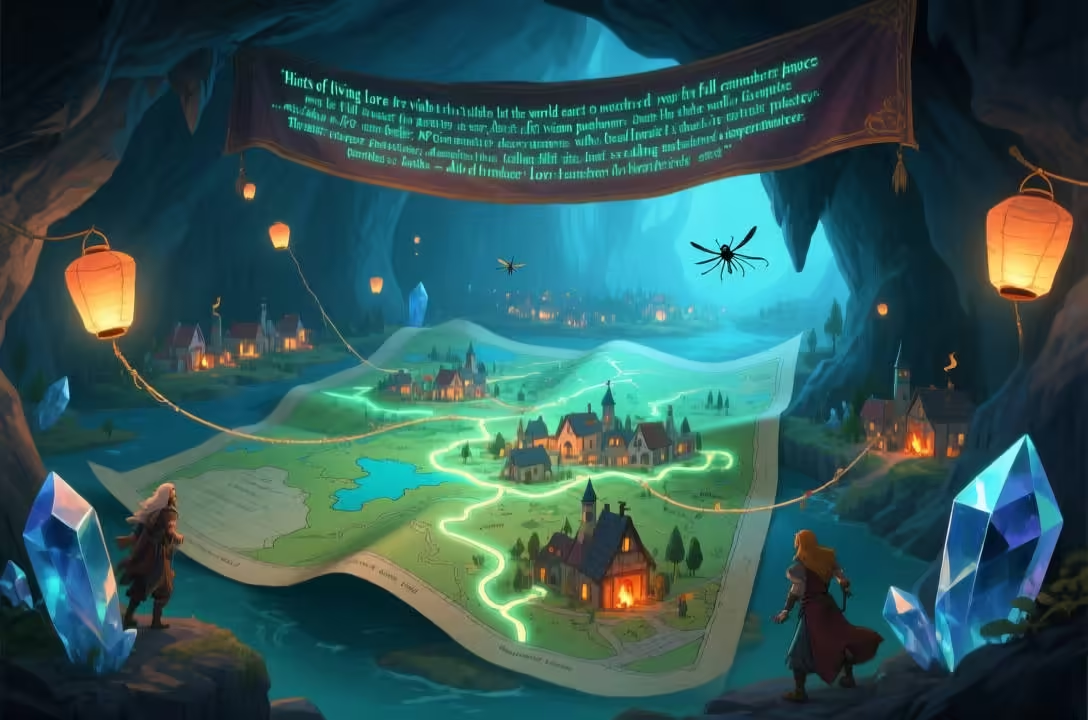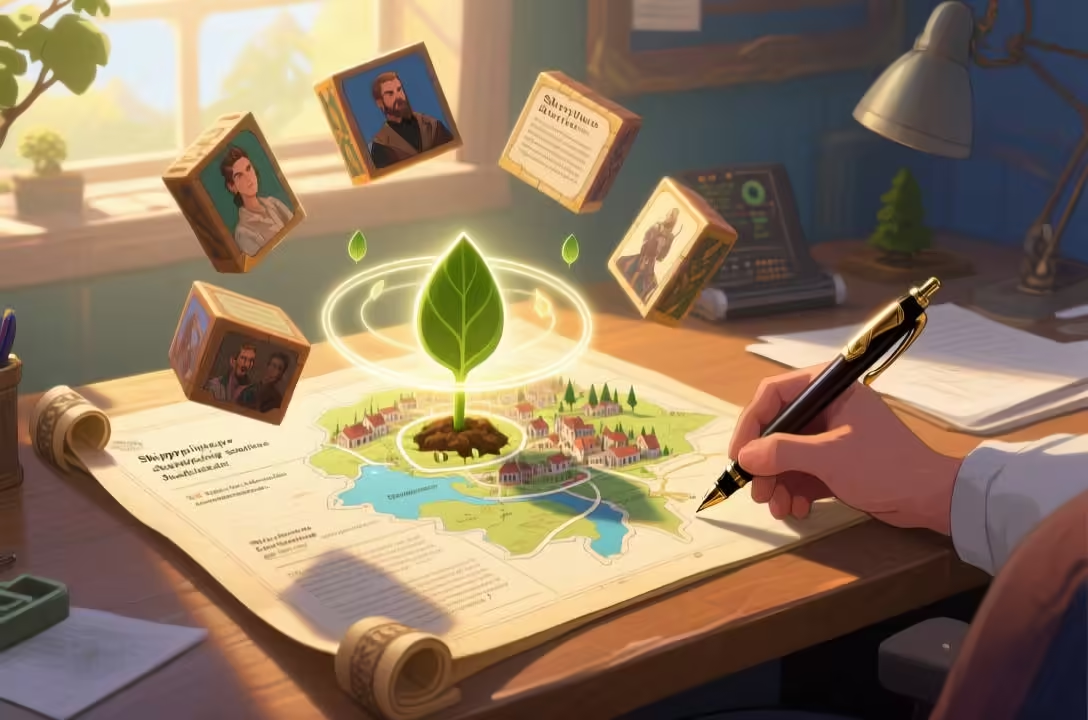4. What living lore really means for open-world RPGs
At its core, living lore is about narratives that don’t sit behind a glass case. Instead, storylines react, adapt, and accumulate across play sessions.
Characters remember, factions shift power, and the world records the small decisions that add up to drama. This isn’t merely branching dialogue trees — it’s a web of stateful systems where environmental, political, and social variables feed back into plot opportunities.
The result is a living world that offers emergent stories: not pre-written beats, but consequences that feel authored. That shift reframes player choice from illusion to authorship, and gives narrative design a dynamic new role.
( (Source)

3. Design patterns that power dynamic storytelling and branching narratives
Practical systems are what turn the idea of living lore into something ship-ready. Patterns like reactive event queues, reputation graphs, modular storylets, and tag-based content selectors let developers compose scenes from interoperable pieces.
Save-state propagation and conflict-resolution rules prevent paradoxes when two storylines collide. Add lightweight AI directors to prioritize emergent beats and you get adaptive storytelling that still respects authorial intent.
These patterns scale: they keep the game coherent when a player topples a kingdom or quietly undermines a merchant guild. It’s not magic — it’s systems engineering married to narrative design.
Designers can prototype with data-driven rules, then hand-tune for emotional payoffs. ( (Source)

2. Where living lore is already seeding memorable moments
Hints of living lore are visible in titles that let the world react to persistent player action, but the full vision pushes further: every side quest, NPC memory, and faction reaction becomes a thread in a player’s history. Developers experimenting with interactive narrative and adaptive systems have shown how localized changes ripple into believable consequences — towns burn, alliances shift, and rumors mutate into new quest hooks.
These smaller projects act as testbeds, proving that living lore doesn’t require infinite budgets; it needs good rules, smart tooling, and a willingness to embrace messy, emergent outcomes. In practice, the biggest payoff is engagement: players return because the world remembers them.
( (Source)

1. Practical steps for building evergreen narrative systems
Shipping living lore starts with authoring workflows that scale. Designers should break stories into modular, reusable components, instrument choices for analytics, and build reconciliation systems that handle conflicting outcomes.
Automated testing for narrative plausibility helps—run thousands of simulated plays to spot dead-ends or tonal mismatch. For multiplayer, deterministic event logs or consensus rules keep the lore coherent across shared spaces.
Finally, live-ops tools let writers seed new branches without destructive retconning. These practices turn narrative design into a maintainable craft: evergreen stories that evolve with the player base rather than degrade into curated shards.
It’s about infrastructure plus creativity — the backbone that lets emergent tales breathe. (Looking ahead, living lore promises RPGs that are less about replaying content and more about living through consequences.
For developers, that means thinking in systems and second-order effects; for players, it means finally getting a world that keeps the receipts. Who wouldn’t want to play in a world that remembers?
🌱 (Source)

